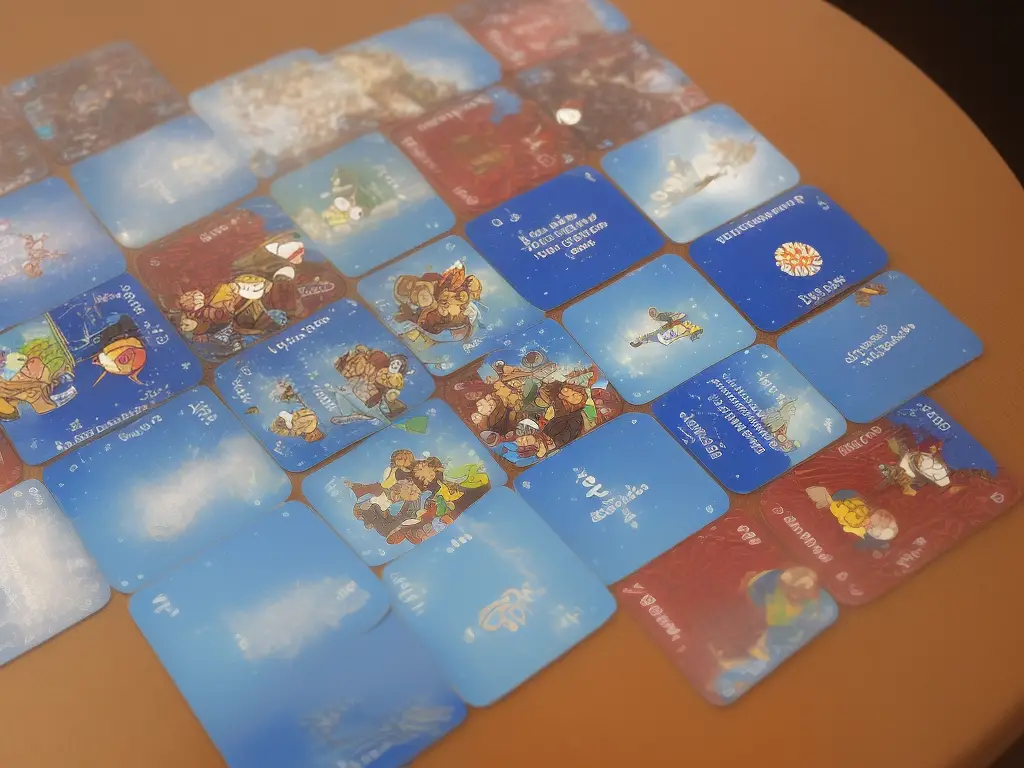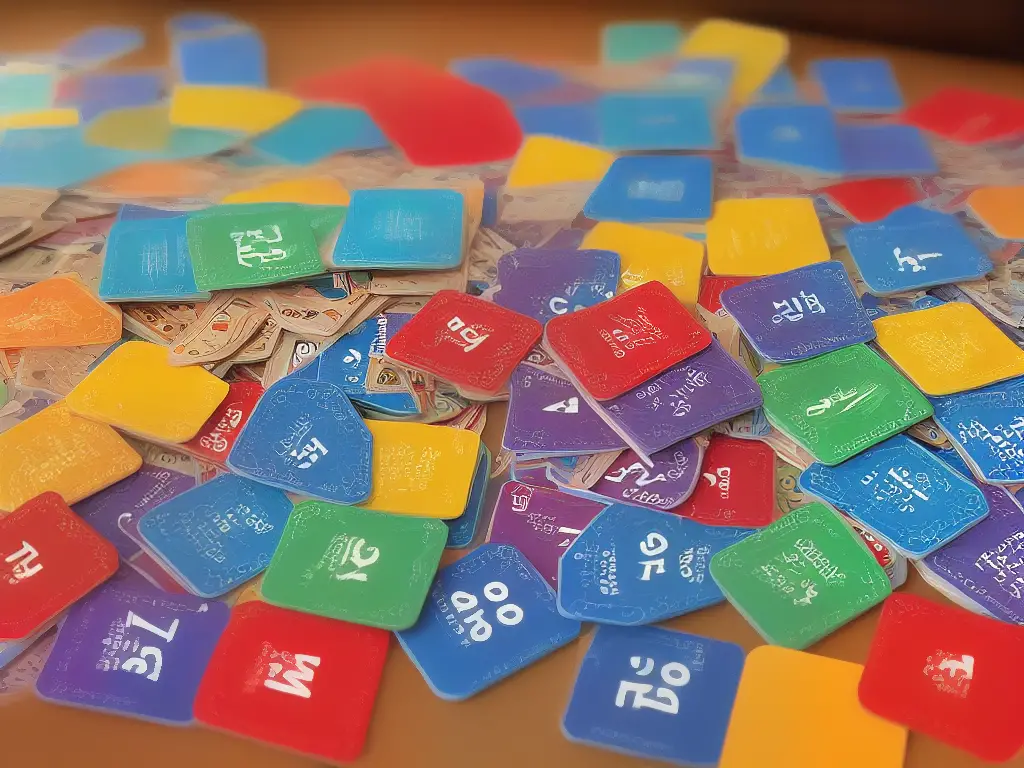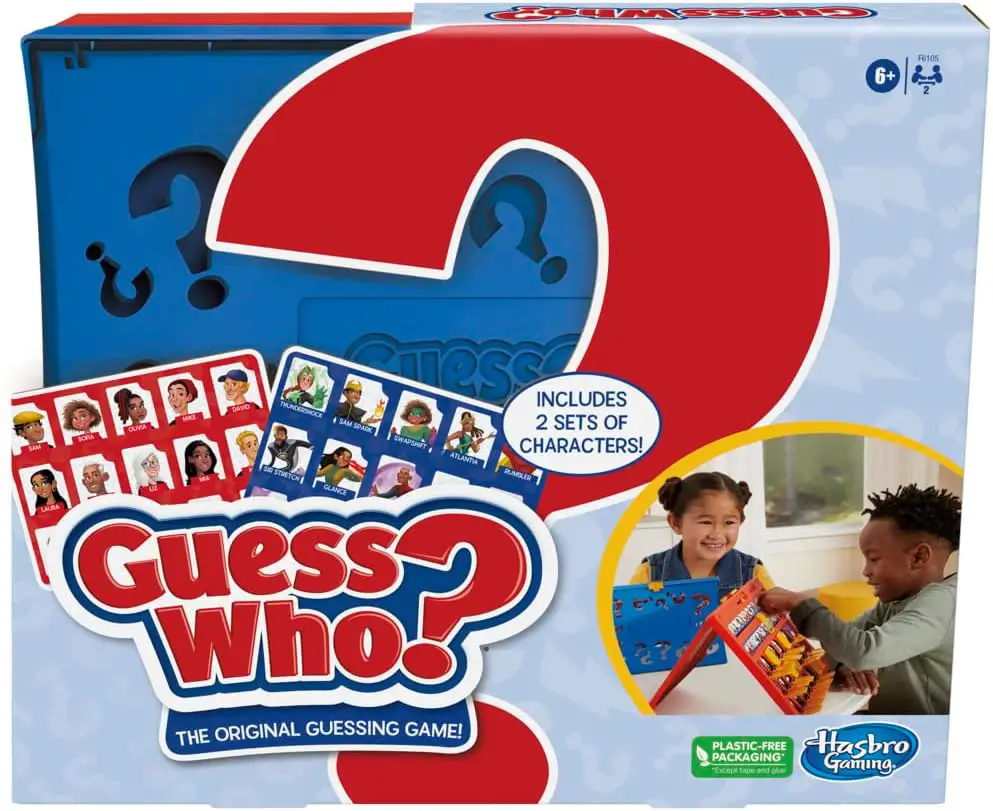Guess Who is a popular guessing game that challenges players to identify their opponent’s secret character. To become a master at this classic game, it is essential to understand the rules, develop a foolproof strategy, and improve your intuition. This article will provide you with valuable tips and tactics that will significantly boost your chances of winning at Guess Who.

This article contains Amazon affiliate links. I will earn a small fee if you use one of these links to make a purchase. It will not increase the price you have to pay!
Understanding Game Rules
Guess Who is a popular board game that tests your detective skills and ability to ask the right questions. The game is best played with two people, but it can also be played in teams. To win, you need to outsmart your opponent by identifying their mystery character before they can identify yours.
Objective of Guess Who
The primary objective of Guess Who is to determine your opponent’s mystery character before they can guess yours. Each player has a board with 24 different characters, and the mystery character is chosen randomly from the available options. By asking strategic and targeted questions, you need to deduce which character your opponent has selected and correctly guess their identity.
Setup
- Each player receives a game board, which contains 24 character cards with illustrations and names.
- Shuffle the deck of character cards and place one card face down in the mystery cardholder for each player. This card represents the mystery character your opponent must guess.
- Adjust the remaining character cards on your board so that they are all visible and upright.
How to Play
- Decide who goes first by either flipping a coin or agreeing on an order. During your turn, you are allowed to ask one yes or no question to your opponent to gather information about their mystery character.
- The questions should relate to the physical appearance or features of the characters on the board. Examples include, ‘Does your character wear glasses?’ or ‘Does your character have a beard?’
- Your opponent must answer your question truthfully with a simple ‘yes’ or ‘no.’
- Based on the response, eliminate the characters on your board that do not match the description. You can do this by flipping down the character cards that you think aren’t the mystery person.
- After you ask the question, it’s your opponent’s turn to ask a question.
- Repeat the process of asking questions and eliminating characters until only one character remains on your board.
How to Win
- Once you believe you know your opponent’s mystery character, make your guess during your turn instead of asking a question.
- If your guess is correct, you win! If your guess is incorrect, your opponent wins.
Tips for Winning at Guess Who
- Start with broader questions to eliminate larger groups of characters, such as ‘Is your character male or female?’ or ‘Does your character have a hat?’
- Pay equal attention to your questions as well as your opponent’s questions, as their queries may provide additional clues and information about your own character.
- Try to ask unique questions that target specific features, especially when narrowing down the last few characters.
- Be patient and do not rush to guess your opponent’s character, as incorrect guesses result in an immediate loss.
By understanding the basic rules of Guess Who and developing a strategy for asking clever questions, you can improve your chances of winning the game. Remember, the key to success lies in observing your opponent, eliminating possibilities, and asking the right questions to reveal the mystery character. Good luck and have fun!

Developing a Strategy
Guess Who is a popular two-player character guessing game that requires strategic thinking and good observational skills. The game involves players selecting a character, and then taking turns to identify their opponent’s character by asking yes or no questions. To win at Guess Who, you need to effectively eliminate as many characters as possible with each question, and can achieve this by developing a strong strategy.
1. Understand the character board
Study the character board and become familiar with the various character attributes, such as hair color, eye color, glasses, facial hair, and accessories. This knowledge will help you ask precise questions and eliminate characters efficiently.
2. Start with broad questions
Begin the game by asking questions that divide the character board as close to halfway as possible. This can help to maximize the number of characters you eliminate with each question. Example questions might include:
- Does your character have hair?
- Is your character wearing glasses?
- Does your character have facial hair?
3. Analyze the remaining characters
After each question, take a moment to study the board and identify patterns or common attributes shared by several remaining characters. This can help you identify the best questions to ask next.
4. Ask specific questions when necessary
As the number of remaining characters becomes smaller, you may need to ask more specific questions to eliminate them. Base your questions on the attributes you identified in step 3, and always aim to eliminate as many characters as possible. Example questions might include:
- Does your character have blonde hair?
- Is your character wearing a hat?
5. Eliminate characters based on multiple attributes
As the game progresses, try to eliminate characters based on multiple attributes at once. For example, if you know your opponent’s character has hair and glasses, ask a question like:
- Does your character have black hair and glasses?
This strategy allows you to eliminate multiple characters in a single turn and increases your chances of finding the correct one.
6. Be mindful of your opponent’s strategy
Pay close attention to the questions your opponent asks, as this will give you clues to the character they are trying to guess. Adjust your strategy as required to counteract their tactics and maintain the upper hand in the game.
7. Stay adaptable and flexible
It’s crucial to remain adaptable and be prepared to change your strategy as the game progresses. As the pool of characters decreases, you will need to think creatively and ask unconventional questions to eliminate the remaining options.
By implementing these strategies and consistently analyzing the character board, you can greatly increase your chances of winning at Guess Who. Remember that practice makes perfect, so keep playing and refining your strategy to become a Guess Who champion.

Memorizing Character Features
Winning at Guess Who involves a combination of memorization, smart questioning, and strategic thinking. Here are some valuable tips to help you memorize character features and develop an effective winning strategy:
-
Start by examining the character cards: Begin by familiarizing yourself with each character card in the game. Study each one carefully and pay attention to the varying features. Spend some time analyzing each card and noting distinct aspects that set them apart from the others.
-
Develop a memory system: To aid in memorization, create a mental or written categorization system that can help you group characters according to similar features. For example, you may want to categorize characters based on hair color, with separate categories for blonde, brunette, and red-headed characters. This way, if your opponent asks about hair color, you can quickly reference your mental or written memory system.
-
Look for distinct features: Beyond simply memorizing features like eye color, facial hair, or glasses, pay close attention to particularly distinctive or unique features among the characters. For example, a character may have a particularly noticeable hat or a unique piece of jewelry. Memorizing these more distinct features can give you an edge in the game.
-
Develop a questioning strategy: In addition to memorizing the characters, create an effective questioning strategy to move through the rounds. This strategy should be based on asking broad questions initially to eliminate as many characters as possible. For example, a good first question could be, ‘Does your character have blonde hair?’ Once you’ve narrowed down the options, you can start getting more specific.
-
Practice makes perfect: The more you play Guess Who, the more familiar you will become with the characters and their unique traits. This will allow you to develop better memorization skills and an effective questioning strategy. Consider playing regularly, either alone or with friends, to build your skills and increase your chances of winning.
-
Stay adaptable: Remember that each game might play out differently, so you may need to adjust your strategy and memorization efforts as you go. Be prepared to think on your feet and adapt your approach as-needed.
By following these steps and dedicating time to studying the characters, developing a strategy, and practicing often, you can significantly improve your ability to win at Guess Who. Good luck, and happy playing!

Guess Who Probabilities
Guess Who is a classic two-player guessing game where the objective is to correctly identify your opponent’s character by asking a series of yes or no questions. Understanding the probability and percentages of various character categories can improve your chances of winning the game. In this guide, we will discuss how to use probability and percentages to increase your success in Guess Who.
Step 1: Familiarize Yourself with the Characters
Before you start playing Guess Who, make sure you familiarize yourself with all the characters in the game. Look for distinctive features such as hair color, facial hair, glasses, hats, and gender. This will help you come up with better questions to eliminate the most characters possible in each round.
Step 2: Understand the Basic Probability Concept
Probability is a concept in mathematics that refers to the likelihood of an event occurring. In the context of Guess Who, the probability of a character having a specific feature can be calculated by dividing the number of characters with that feature by the total number of characters. For example, if 5 out of 24 characters have red hair, then the probability of a character having red hair would be 5/24 or approximately 21%.
Step 3: Calculate the Percentages of Different Character Categories
Review the characters and calculate the percentage of various categories in the game. Here is a general breakdown of some character categories in Guess Who:
- Percentage of males: Calculate the number of male characters divided by the total number of characters.
- Percentage of females: Calculate the number of female character divided by the total number of characters.
- Percentage of characters with glasses: Calculate the number of characters wearing glasses divided by the total number of characters.
- Percentage of characters with facial hair: Calculate the number of characters with facial hair divided by the total number of characters.
Keep in mind that these percentages will vary slightly depending on the specific edition of Guess Who you are playing. Having these percentages handy will help you focus on asking questions that are more likely to eliminate a larger number of characters.
Step 4: Ask Smart Questions
Now that you have an understanding of the probabilities, put it to use by asking smart questions. A good strategy is to begin by asking questions that target categories with roughly 50% probability; this way, you are likely to eliminate half the characters with a single question.
For example, since the characters in most Guess Who editions are predominantly male, you could start by asking if their character is male, as this has a higher likelihood of eliminating a significant number of characters.
Step 5: Keep Track of Your Opponent’s Answers
As you ask each question, note your opponent’s answers and use that information to narrow down the remaining possibilities. For example, if you ask if their character has glasses and they say yes, then you can eliminate all characters without glasses from consideration.
Step 6: Adapt Your Questions and Narrow Down the Possibilities
As the game progresses and fewer characters remain on the board, adjust your questions to target smaller categories with higher probability. For example, if only a few characters with facial hair remain, ask if their character has facial hair to quickly eliminate them.
By understanding probability and percentages, you can improve your chances of winning Guess Who. Familiarize yourself with the characters, calculate probabilities for different categories, ask smart questions, and adapt your strategy as the game progresses. With practice and skills in probability, you can become a more strategic and successful Guess Who player.

Adapting Questions to Your Opponent
Guess Who is a fun and engaging board game that tests your ability to use deductive reasoning to guess your opponent’s mystery character.
To win at Guess Who, it’s essential to understand how to adapt your questioning style based on your opponent’s capabilities. This can make a significant difference in your overall success in the game. Below are some steps and tips on how to adapt your questions to your opponent for winning at Guess Who.
Assess your opponent’s skill level:
Before starting the game, try to determine your opponent’s skill level. Are they a beginner, an intermediate player, or an expert at Guess Who? Knowing their capabilities will help you tailor your questions accordingly.
Start with general questions:
If you’re unsure of your opponent’s skill level, start with general questions that will eliminate several characters at once. For example, you can ask, ‘Is your character wearing glasses?’ or ‘Does your character have facial hair?’ By beginning with broad questions, you can gauge how well your opponent responds and adjust your questioning strategy accordingly.
Use simple questions for beginner opponents:
If you realize that your opponent is a beginner or struggles with more complicated questions, stick to simple, yes-or-no questions. Examples include ‘Is your character male or female?’, ‘Is your character blonde?’, or ‘Does your character have a hat?’ These questions are easy to understand and will help you narrow down the mystery character effectively.
Opt for average questions against intermediate opponents:
For opponents with an intermediate skill level, you can start using slightly more complex questions. These should still be yes-or-no questions but can involve slightly more detail or multiple character traits. For example, ‘Is your character older with white hair?’, ‘Does your character wear a hat and glasses?’, or ‘Is your character female with short hair?’ These questions will help you eliminate multiple options while keeping the game enjoyable and competitive for both players.
Use advanced questions for expert opponents:
If your opponent is an expert at Guess Who or has exceptional deductive reasoning skills, consider using advanced questions that are more challenging and require deeper thought. These questions can still be yes-or-no but should aim to eliminate numerous characters at once. For example, ‘Does your character have either a beard or a mustache?’, ‘Is your character a red-haired female or a male with glasses?’, or ‘Does your character wear any accessory?’
Bluff and mislead:
To throw off expert opponents, try bluffing or asking misleading questions occasionally. This strategy can confuse your opponent and cause them to doubt their deductions. However, use this tactic sparingly, as it may also slow down your progress in identifying the mystery character.
Pay attention to your opponent’s questions:
Listen to the questions your opponent asks and the responses they receive. Observing their questioning style and the clues they gather can help you form better questions and understand their thought process.
By adapting your questions based on your opponent’s capabilities, you improve your chances of winning at Guess Who. Remember that the key to success in any game is strategy, practice, and a little bit of luck. Happy gaming!

Practicing with Different Variants
Before starting the game, take some time to familiarize yourself with all the characters on the board. This allows you to quickly remember their features and helps you form relevant questions during the game.
Rather than asking specific questions right off the bat, begin with broader questions that can eliminate multiple characters at once. As the game progresses, try to switch to questions about less common features. By doing so, you can eliminate more characters at once. If you find that the remaining characters share a common feature, you can take a risk by asking if their character lacks the common feature, potentially eliminating multiple possibilities at once.
Listening carefully to your opponent’s questions can give you a hint about their mystery character. If you’re down to just a couple of characters, don’t be afraid to make an educated guess, especially if you feel your opponent is close to identifying your character.
There are a variety of Guess Who games available, featuring characters like animals, cartoon characters, or famous personalities. Try playing different versions to expose yourself to various character designs. Change up the traditional character sheets by swapping in your own or using sheets from different Guess Who editions. Get creative and design your own range of custom characters. Challenge yourself to play the game under a set time constraint. Playing against different people gives you exposure to various strategies and questioning styles. This helps you understand different approaches and adjust your gameplay accordingly. Remember, practice makes perfect!

Analyzing Opponent’s Behavior
Before starting the game, spend a few moments observing your opponent. Notice their general demeanor, body language, and facial expressions to get a sense of their baseline behavior. This will help you identify any changes or reactions that may occur during the game.
As the game progresses, try to identify any patterns in your opponent’s behavior. Do they seem more confident or hesitant when answering certain questions? Do they become more animated when discussing specific characters? These patterns can give you insight into their thought process and help you narrow down your own guesses.
Keep a close eye on your opponent’s facial expressions throughout the game. If they seem surprised or confused by one of your questions, this may indicate that their character doesn’t fit the description you provided. Conversely, if they seem confident or pleased with a response, their character might match the description you gave.
Watch for subtle signs of discomfort or stress, such as fidgeting or closed-off body language, which might indicate that you are close to guessing their character.
Listen to your opponents voice for clues
Pay attention to any changes in volume, pitch, or inflection that might reveal their level of confidence or uncertainty.
Observe how long it takes for your opponent to answer your questions. If they respond quickly and confidently, they likely have a good handle on their character’s traits. However, if they take a while to think or seem unsure, you might be onto something that doesn’t quite align with their character.
As you learn more about your opponent’s behavior and reactions, adjust your line of questioning accordingly. Try asking more specific questions that might trip them up or cause a visible reaction, giving you more insight into their character.
Monitor the questions your opponent asks and the guesses they make about your character. This can help you understand their thought process and give you an idea of which characters they have ruled out or which they may be focusing on.
To keep your opponent on their toes, mix up the types of questions you ask and ask them in random order. This will make it more difficult for your opponent to figure out a pattern in your questioning and make it harder for them to predict your next move.
While you’re analyzing your opponent, remember that they’re likely doing the same to you. Keep your own facial expressions and body language neutral and controlled to avoid giving away any hints about your character.
By carefully observing your opponent’s behavior and reactions, adapting your questions based on the information you gather, and maintaining a neutral demeanor yourself, you’ll increase your chances of success in Guess Who. Remember, practice makes perfect – the more you play, the better you’ll become at picking up on subtle cues and outsmarting your opponents.

Fine-Tuning Your Intuition in Guess Who
Winning at Guess Who relies heavily on asking the right questions and making informed guesses. The game involves narrowing down a list of characters by asking your opponent a series of questions about the appearance and characteristics of the person they have selected. To do this successfully, you need to develop your intuitive skills, allowing you to make educated guesses even in situations with limited information. In this guide, we will explore how to enhance your intuition and apply it to Guess Who and other guessing games.
1: Observe and analyze patterns
- Play the game multiple times, take note of patterns, and learn from experience. Pay attention to which questions are most effective and which characters tend to be picked more frequently.
- Observe how the characters are grouped. Are there more characters with glasses, beards, or hats? This can help you determine which questions may eliminate more options at once.
- Analyze the distribution of different features within the characters. For example, if beards are prevalent in a particular group, it would be effective to ask a question related to beards.
2: Developing question strategies
- Begin by asking broad questions to eliminate as many characters as possible. For example, you can ask about the character’s gender, hair color, or glasses.
- As you progress in the game, shift to more specific questions that can pinpoint unique features of the characters left.
- Be unpredictable with your questions. Try not to be too systematic, as this can make it easier for your opponent to guess which character you have.
3: Pay attention to non-verbal cues
- Observe your opponent’s body language when you ask questions. Do they hesitate or seem confident in their answer? This information can help you gauge whether the question got you closer to the correct answer.
- Be aware of your body language, as well. Try not to give away any information about your character based on your reactions to your opponent’s questions.
4: Be adaptable
- If your initial strategy is not working, be prepared to switch tactics and ask different questions to narrow down your options.
- Learn from your mistakes and adapt your questioning technique in future games.
5: Follow your gut
- As you develop your intuition, trust your instincts when asking questions. Sometimes a seemingly random question can lead you to the right character.
- Don’t be afraid to take a risk and make an educated guess based on your intuition.
Conclusion: Fine-tuning your intuition for Guess Who requires a combination of observation, analysis, strategy, adaptability, and trust in your instincts. By applying these tips, you can improve your ability to make informed, intuitive guesses and increase your chances of winning.

By following the tips and strategies outlined in this article, you will greatly improve your gameplay and turn yourself into a Guess Who champion. Dedicate time to understanding the rules, practicing your skills, and fine-tuning your intuition. Remember that attention to detail, adaptability, and a keen sense of observation can make all the difference in this exciting and challenging guessing game. Happy playing!
Frequently Asked Questions
Q: What is Guess Who?
A: Guess Who is a classic board game where players ask yes-or-no questions to deduce the opponent’s mystery character. The goal is to be the first to guess the correct character.
Q: How can I improve my chances of winning at Guess Who?
A: To increase your chances, focus on asking questions that eliminate the maximum number of characters with each response. Use logical deductions to narrow down the possibilities.
Q: Are there specific strategies for asking effective questions?
A: Yes, some strategies include starting with broad questions to eliminate a larger group of characters, targeting specific characteristics, and considering the opponent’s previous responses.
Q: Can I use a process of elimination to narrow down the possibilities?
A: Absolutely! By systematically eliminating characters based on the opponent’s answers, you can narrow down the potential options and increase your likelihood of guessing correctly.
Q: How can I keep track of the information during the game?
A: It’s helpful to keep a mental or physical note of the information gathered during the game. Use checkboxes, initials, or other methods to track the characters that are eliminated. Or simply just flip the faces down!
Q: Are there any strategies for bluffing or misdirecting the opponent?
A: While bluffing is not an official rule in Guess Who, you can ask questions strategically to mislead or confuse your opponent. However, keep in mind the fair play and sportsmanship aspects of the game.
Q: Can I adapt the game with variations or additional rules?
A: Yes, you can add variations or additional rules to make the game more challenging or tailored to your preferences. This can include time limits, limited question counts, or themed versions.
Q: Where can I find more game guides and resources?
A: For more game guides and resources, visit CardsAndBoards.net. Explore our collection of entertaining games for endless fun and learning!
